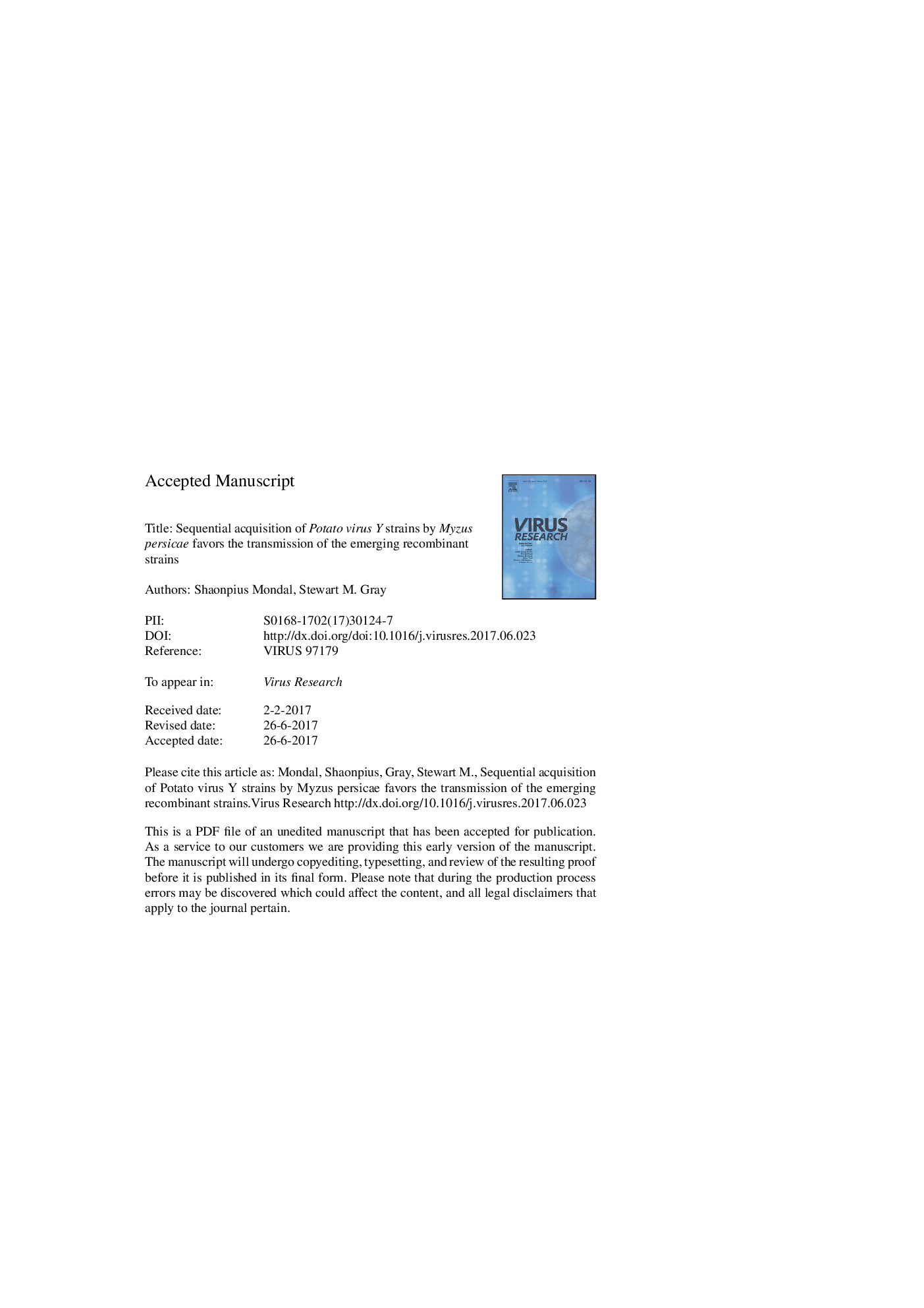| Article ID | Journal | Published Year | Pages | File Type |
|---|---|---|---|---|
| 8752097 | Virus Research | 2017 | 29 Pages |
Abstract
In the past decade recombinant strains of Potato virus Y (PVY) have overtaken the ordinary strain, PVYO, as the predominant viruses affecting the US seed potato crop. Aphids may be a contributing factor in the emergence of the recombinant strains, but studies indicate that differences in transmission efficiency of individual PVY strains either from single or mixed infections, although variable, are not generally significant. Multiple strains of PVY are present in all potato production areas and common in many potato fields. Therefore, it is likely that individual alate aphids moving through a potato field will sequentially encounter multiple strains as they “taste test” multiple potato plants while looking for a suitable host. This study examined the transmission likelihood and efficiency of three common PVY strains when acquired sequentially by individual aphids. Green peach aphids (Myzus persicae, Sulzer) were allowed a 2-3Â min acquisition access period (AAP) on potato leaves infected with PVYO, PVYN:O or PVYNTN, followed by another 2-3Â min AAP on a second potato leaf infected with a different PVY strain before being transferred to healthy potato seedlings for a 24Â h inoculation access period. All possible combinations of the three strains were tested. Strain-specific infection of the recipient plants was determined by TAS-ELISA and RT-PCR 3-4Â wk post-inoculation. The recombinant strains, PVYN:O and PVYNTN, were transmitted more efficiently than PVYO when they were sequentially acquired regardless of the order acquired. PVYN:O and PVYNTN were transmitted with similar efficiencies when they were sequentially acquired regardless of the order. The recombinant strains appear to preferentially bind to the aphid stylet over PVYO or they may be preferentially released during inoculation. This may contribute to the increased incidence of the recombinant strains over PVYO in fields or production regions where multiple PVY strains are detected.
Related Topics
Life Sciences
Immunology and Microbiology
Virology
Authors
Shaonpius Mondal, Stewart M. Gray,
